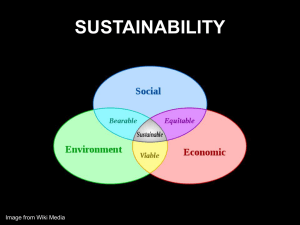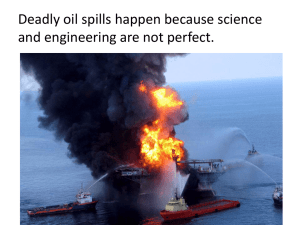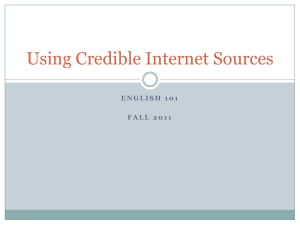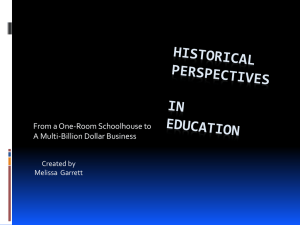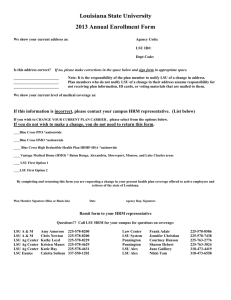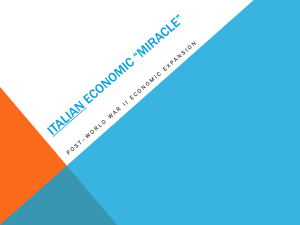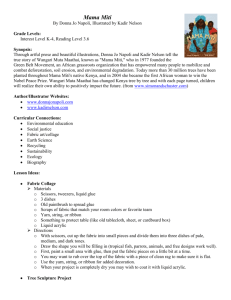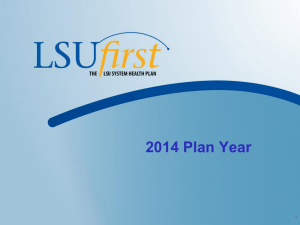ppt
advertisement
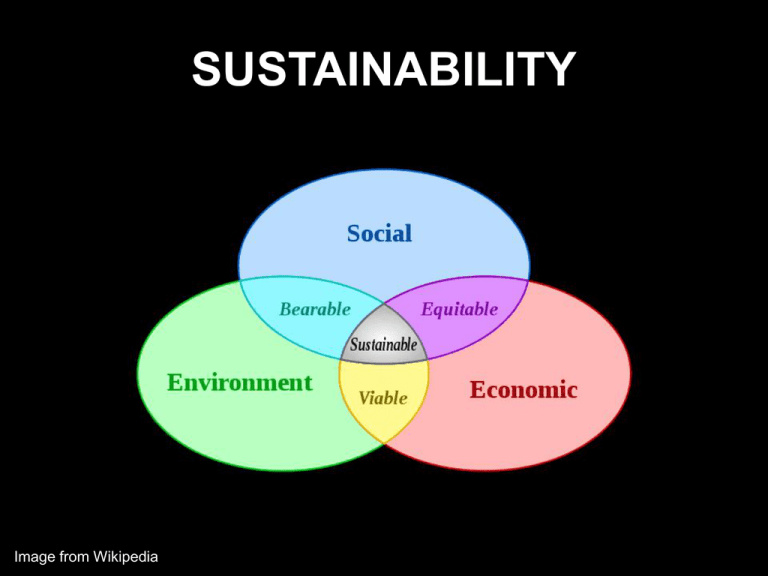
SUSTAINABILITY Image from Wikipedia Sustainable Development Image from Wikipedia Sustainable Development “A sustainable society is one that ensures the health and vitality of human life and culture and of nature’s capital, for present and future generations. Such a society acts to stop the activities that serve to destroy human life and culture and nature’s capital, and to encourage those activities that serve to conserve what exists, restore what has been damaged, and prevent future harm.” Stephen Viederman (1992) Quote found in Groom et al. (2006) Sustainable Development Image from Wikipedia United Nations Conference on the Human Environment – Stockholm, 1972 Two ground-breaking reports resulted: World Conservation Strategy (1980) Our Common Future, a.k.a. the Brundtland Commission Report (1987) Sustainable Development Gro Harlem Brundtland (b. 1939) Prime Minister of Norway (1981, 1986-89, 1990-96; 1st woman) Director General of World Health Organization (1998-2003) Special Envoy on Climate Change to U. N. Secretary-General Ban Ki-moon (since 2007) Indira Gandhi Peace Prize (1988) Photo of Brundtland from Wikipedia Sustainable Development Our Common Future, a.k.a. the Brundtland Commission Report (1987) Sustainable development "meets the needs of the present without compromising the ability of future generations to meet their own needs" United Nations Conference on Environment & Development, a.k.a. Rio Earth Summit, 1992 Two major achievements: Kyoto Protocol (adopted 1997, Kyoto, Japan) Convention on Biological Diversity (key objective = to develop national strategies for the conservation & sustainable use of biodiversity) Logo from www.eoearth.org United Nations Conference on the Human Environment, Johannesburg, 2002 Two important achievements: Johannesburg Declaration on Sustainable Development Johannesburg Plan of Implementation These global efforts promote sustainable development as they advance the welfare of both humans & nature, while balancing considerations for both Sustainable Development Ecological Society of America Sustainable Biosphere Initiative (1991) Sustainability includes “management practices that will not degrade the exploited system or any adjacent system” Requires “consumption standards that are within the bounds of ecological possibility and to which all can aspire” From Lubchenco et al. (1991) Sustainable Development Examples of what is to be sustained Biodiversity Natural habitats Ecosystems Ecosystem productivity Ecosystem services Evolutionary potential Natural resources Climate Human culture Significant natural & cultural heritage Etc… Modified from Groom et al. (2006) Examples of what is to be developed Social equality Economic security Food & water security Home security Human health Life expectancy Education Stabilized population Etc… Sustainable Development & World Peace Wangari Muta Maathai (1940-2011) Nobel Peace Prize (2004; 1st African woman) for “contribution to sustainable development, democracy & peace” “Protecting the global environment is directly related to securing peace” Photo of Maathai from Wikipedia Sustainable Development & World Peace Wangari Muta Maathai (1940-2011) Nobel Peace Prize (2004; 1st African woman) for “contribution to sustainable development, democracy & peace” “The Norwegian Nobel Committee has challenged the world to broaden the understanding of peace: there can be no peace without equitable development; there can be no development without sustainable management of the environment in a democratic and peaceful state.” Photo of Maathai from Wikipedia Sustainable Development & World Peace “Protecting the global environment is directly related to securing peace” Images of the Persian Gulf War (1990-1991) from Wikipedia Sustainable Development & World Peace “Protecting the global environment is directly related to securing peace” It’s a complex task, since human enterprise is complex & dynamic, just as nature is complex &dynamic Image of PowerPoint diagram that portrays the complexity of U.S. stratgey in Afghanistan from N. Y. Times Sustainable Development & Social Equality Selected symbolism of some awareness ribbons illustrates various interconnected improvements to the Global Human Condition and Nature through thoughtful Sustainable Development Orange: malnutrition White: gender violence Light blue: Purple: Green: child abuse; environmental religious slavery intolerance abuse (incl. sexual) Images of examples of awareness ribbons from Wikipedia Black: Sept. 11, 2011 Sustainable Development & Social Equality > 1 billion people suffer from malnutrition ~ 1 person dies every second from malnutrition 1 in 5 is a child Map from Wikipedia Sustainable Development Sustained growth (in terms of resource consumption) is impossible, so sustainable development seeks development without growth Limits of space, food, waste disposal, energy, etc. disallow sustained growth Sustainable development makes qualitative changes, without increasing quantitative demands on natural populations & ecosystems How can we improve the quality of life for human societies through qualitative changes to our economy in ways that support healthy natural environments? How can we begin the move away from the current agenda of non-sustainable economic growth? Recall Ch. 5, Groom et al. (2006); questions from Ch. 16, Groom et al. (2006) Sustainable Development How can we achieve it? Economic tools E.g., charitable donations, foreign aid, boycotts, embargos, etc. Social pressure Consider your own example as you “think globally, act locally” (quote used by & possibly originated with René Dubos – advisor to U. N. Conference on the Human Environment, 1972) Policy mechanisms Consider the policies we have discussed; see Ch. 17, Groom et al. (2006) Etc… Sustainable Development at LSU LSU Recycles LSU Recycling Web site Sustainable Development at LSU What about the other actions in the conservation mantra: Reduce, Reuse, Recycle? Sustainable Development at LSU LSU’s “Green Report Card” (LSU scores a C+) Green Report Card Web site Prospects for Global Sustainability “Crossing certain biophysical thresholds could have disastrous consequences for humanity; Three of nine interlinked planetary boundaries have already been overstepped” Figure from Rockstrom et al. (2009) Nature
